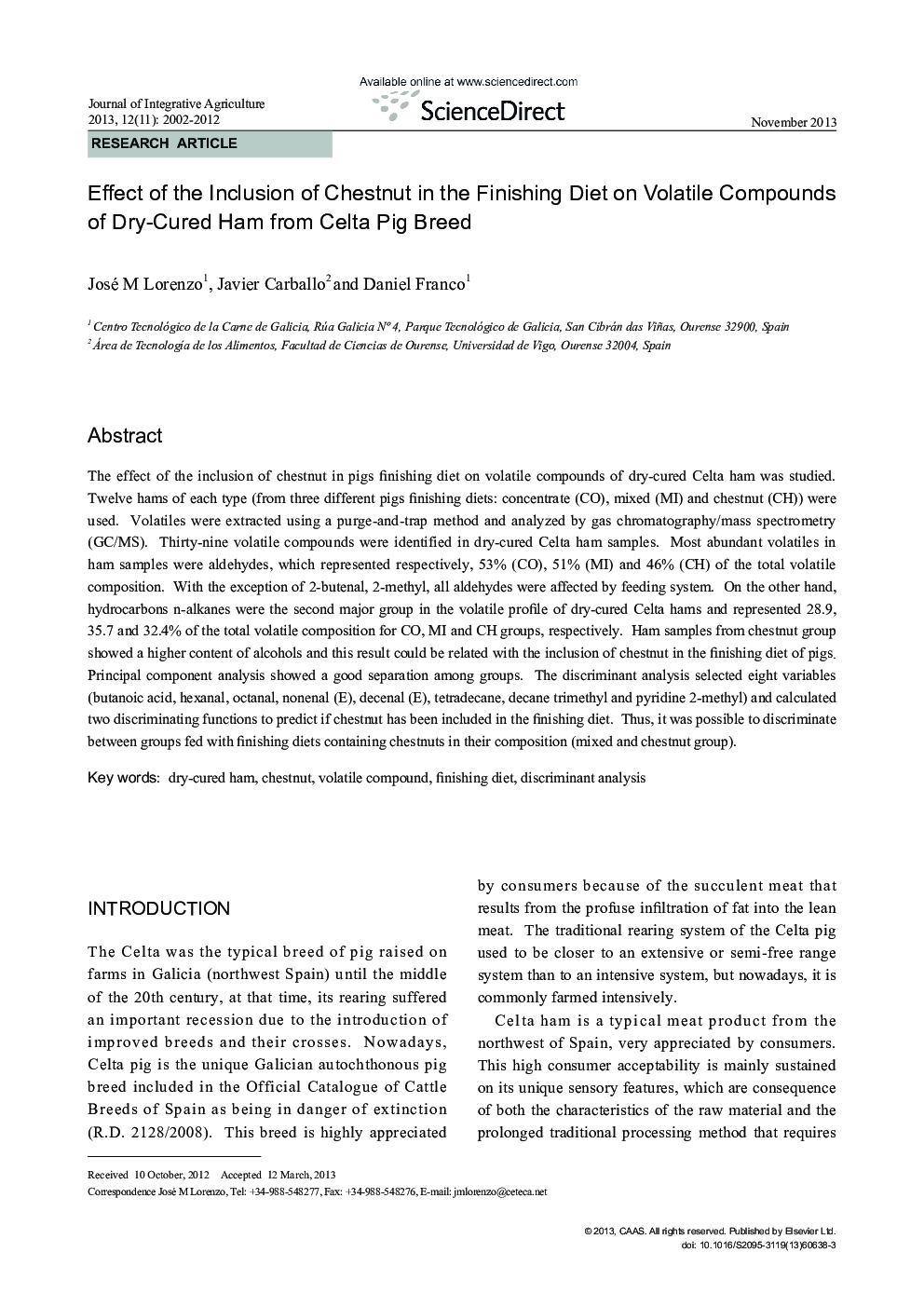| Article ID | Journal | Published Year | Pages | File Type |
|---|---|---|---|---|
| 4494964 | Journal of Integrative Agriculture | 2012 | 11 Pages |
The effect of the inclusion of chestnut in pigs finishing diet on volatile compounds of dry-cured Celta ham was studied. Twelve hams of each type (from three different pigs finishing diets: concentrate (CO), mixed (MI) and chestnut (CH)) were used. Volatiles were extracted using a purge-and-trap method and analyzed by gas chromatography/mass spectrometry (GC/MS). Thirty-nine volatile compounds were identified in dry-cured Celta ham samples. Most abundant volatiles in ham samples were aldehydes, which represented respectively, 53% (CO), 51% (MI) and 46% (CH) of the total volatile composition. With the exception of 2-butenal, 2-methyl, all aldehydes were affected by feeding system. On the other hand, hydrocarbons n-alkanes were the second major group in the volatile profile of dry-cured Celta hams and represented 28.9, 35.7 and 32.4% of the total volatile composition for CO, MI and CH groups, respectively. Ham samples from chestnut group showed a higher content of alcohols and this result could be related with the inclusion of chestnut in the finishing diet of pigs. Principal component analysis showed a good separation among groups. The discriminant analysis selected eight variables (butanoic acid, hexanal, octanal, nonenal (E), decenal (E), tetradecane, decane trimethyl and pyridine 2-methyl) and calculated two discriminating functions to predict if chestnut has been included in the finishing diet. Thus, it was possible to discriminate between groups fed with finishing diets containing chestnuts in their composition (mixed and chestnut group).
